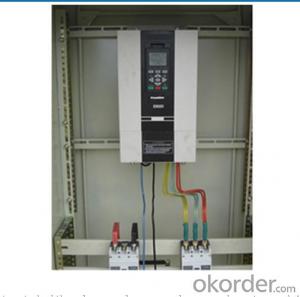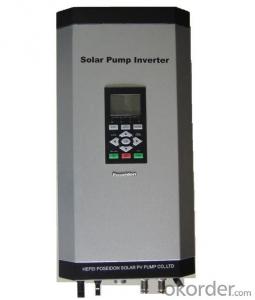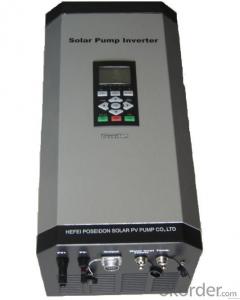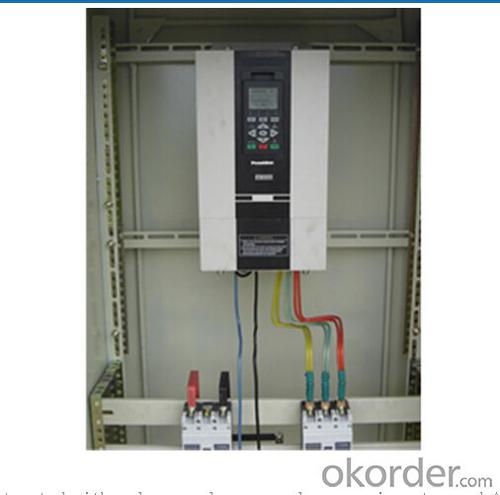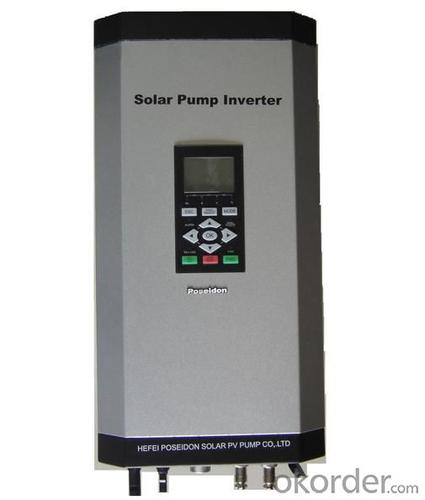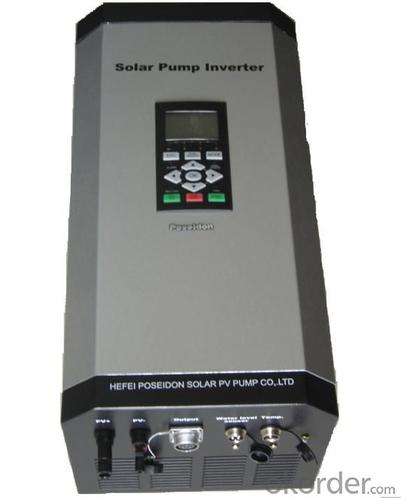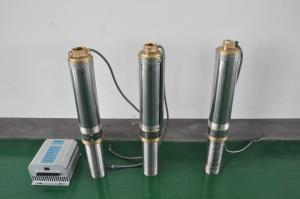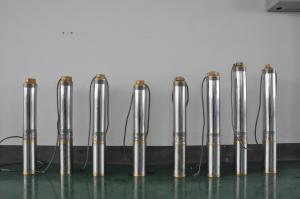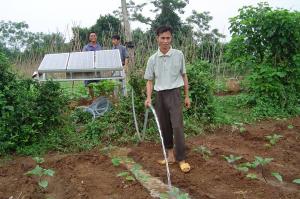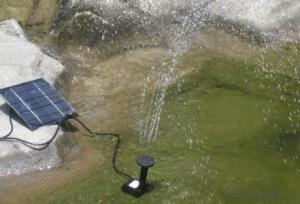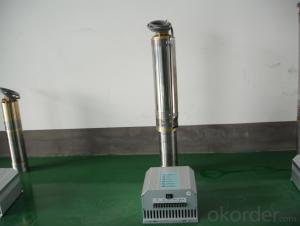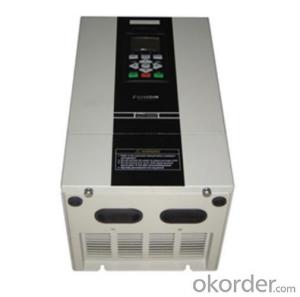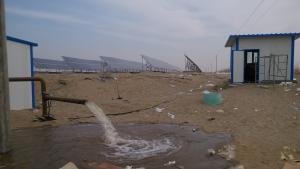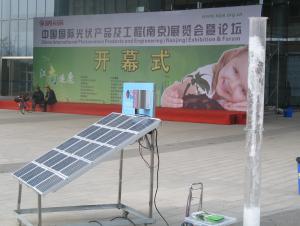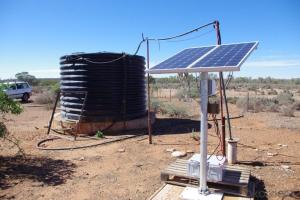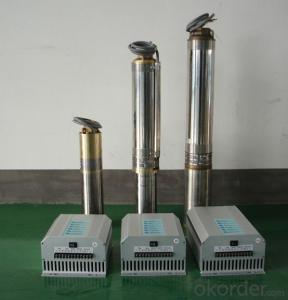2 Hp Solar Pump Inverter FCPM75KH
- Loading Port:
- China Main Port
- Payment Terms:
- TT OR LC
- Min Order Qty:
- -
- Supply Capability:
- -
OKorder Service Pledge
Quality Product, Order Online Tracking, Timely Delivery
OKorder Financial Service
Credit Rating, Credit Services, Credit Purchasing
You Might Also Like
Solar pump inverter FCPM75KH Product Description:
Solar water pumping system is constructed with solar panel array,solar pump inverter and AC water pump, DC current produced from solar panel will be delivered to solar pump inverter,and it will convert it into AC current to drive water pump,and will automatically regulate output frequency according to sun radiance intensity,maximally realize MPPT tracking function.
Features
Adopting the proposed dynamic VI maximum power point tracking (MPPT) control method, with fast response, and reliable operation, achieves efficiency of 99%.
Designed with variable frequency driver, greatly improves efficiency
Extremely high efficiency
Digital mode control, with automatic operation and manual operation mode options
Complete protection functions
Adopts intelligent IPM module, with high reliability
LCD display and operation panel, in real time presents operating data
Optional for water level measurement and control circuit
Applicable for general ACC pumps, like centrifugal pump, piston pump etc.
Independent intellectual property; Highly effective, the redundant reliability, exempts the maintenance and the long life.
The pumps are soft started, fully protected.
No batteries are used. So better Sunlight, more water.
Datasheet.
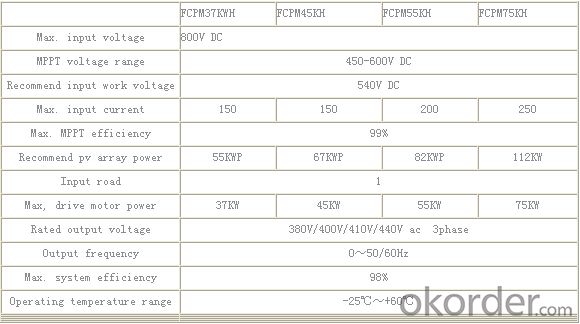
- Q: Can solar pumps be used for water supply in greenhouses or nurseries?
- Yes, solar pumps can indeed be used for water supply in greenhouses or nurseries. Solar-powered pumps are an environmentally friendly and cost-effective solution for providing water to plants in these settings. They utilize solar energy to power the pumps, eliminating the need for grid electricity and reducing operational costs. Additionally, solar pumps can be easily installed and require minimal maintenance, making them a practical choice for water supply in greenhouses and nurseries.
- Q: Can a solar pump be used to fill a swimming pool?
- Yes, a solar pump can be used to fill a swimming pool. Solar pumps use the energy from sunlight to operate, allowing them to circulate and filter water in a swimming pool. This can be a cost-effective and environmentally friendly option compared to traditional electricity-powered pumps.
- Q: How do I monitor the performance of a solar pump system?
- To monitor the performance of a solar pump system, there are several key steps you can take: 1. Install monitoring equipment: Start by installing a monitoring system that can track and record various parameters of the solar pump system. This may include sensors to measure solar radiation, pump output, battery voltage, water flow rate, and other relevant variables. The monitoring equipment can be connected to a central control unit or a data logger for data collection. 2. Set performance benchmarks: Determine the performance benchmarks or targets for your solar pump system. These benchmarks may include desired water flow rate, battery charge level, or pump efficiency. Having clear benchmarks will help you evaluate whether the system is performing optimally or if there are any issues that need attention. 3. Regularly review data: Check the monitoring data regularly to assess the system's performance. This can be done by analyzing the collected data manually or by using software that can present the data in a more organized and comprehensive manner. Look for any deviations from the benchmarks and identify any patterns or trends in the system's performance. 4. Conduct performance audits: Periodically conduct performance audits to evaluate the overall efficiency and effectiveness of the solar pump system. This can involve observing the system's operation, measuring parameters on-site, and comparing the results with the benchmarks. Performance audits can help identify any inefficiencies, malfunctions, or maintenance needs. 5. Utilize remote monitoring: Consider using remote monitoring capabilities if available. Remote monitoring allows you to access real-time data and receive alerts or notifications if any critical parameters deviate from the desired range. This offers the advantage of proactive monitoring and early detection of potential issues, enabling timely corrective actions. 6. Regular maintenance and servicing: Ensure regular maintenance and servicing of the solar pump system. This includes cleaning of solar panels, checking and tightening connections, inspecting pipes and valves, and testing the overall system functionality. Proper maintenance ensures optimal performance and helps prevent any potential breakdowns or inefficiencies. 7. Seek professional assistance: If you are unsure about monitoring the system yourself, consider consulting with a professional solar installer or a technician specialized in solar pump systems. They can provide guidance on the specific monitoring equipment and procedures needed for your system, as well as offer expert advice on troubleshooting and optimizing its performance. By implementing these steps, you can effectively monitor the performance of your solar pump system, identify any issues or inefficiencies, and take appropriate actions to ensure its optimal operation.
- Q: Can a solar pump operate at night?
- No, a solar pump cannot operate at night as it relies on sunlight to generate power and operate.
- Q: Can solar pumps be used for water supply in wildlife sanctuaries or zoos?
- Yes, solar pumps can be used for water supply in wildlife sanctuaries or zoos. Solar pumps are an environmentally friendly and cost-effective solution that can provide a reliable water supply for various purposes such as drinking water for animals, irrigation, or maintaining water features within these establishments. The use of solar pumps helps in reducing reliance on fossil fuels and contributes to sustainable operations in wildlife sanctuaries and zoos.
- Q: Can a solar pump be used for water supply in agricultural research facilities?
- Yes, a solar pump can definitely be used for water supply in agricultural research facilities. Solar pumps are efficient and eco-friendly alternatives to traditional pumps that require electricity or fuel. They harness energy from the sun to power the pump, making them ideal for remote locations or areas with limited access to electricity. In agricultural research facilities, solar pumps can be used to supply water for irrigation systems, hydroponic setups, or livestock watering. They can be integrated into existing infrastructure or used as standalone systems, depending on the specific needs of the facility. Solar pumps are not only cost-effective in the long run due to reduced energy costs, but they also help in reducing carbon emissions and dependence on fossil fuels. Additionally, they require minimal maintenance and have a long lifespan, making them a reliable solution for water supply in agricultural research facilities.
- Q: Does a solar pump require a separate controller?
- Typically, in a solar pump setup, a separate controller is required. Its role is to regulate the power supply to the pump, ensuring efficient operation. By controlling the speed, pressure, and flow of the pump, it can be adjusted to meet specific requirements. Furthermore, the controller functions as a safety measure, safeguarding the pump against overcurrent, overheating, and other potential problems. Moreover, it may offer additional features such as timers, sensors, and remote monitoring capabilities, enhancing the system's functionality and performance. Consequently, a separate controller is indispensable in a solar pump setup.
- Q: What is the average payback period for a solar pump system?
- The average payback period for a solar pump system can vary depending on several factors such as the initial cost of the system, the amount of electricity it generates, and the local energy prices. However, on average, it is estimated that the payback period for a solar pump system ranges from 3 to 8 years. This estimation takes into account the savings in electricity costs that result from using solar energy instead of relying on grid electricity or diesel generators. Solar pump systems are typically used for agricultural irrigation, livestock watering, and other water pumping applications in off-grid or remote areas. It is important to note that the payback period can be further reduced by taking advantage of government incentives, tax credits, or grants for renewable energy projects. Additionally, ongoing maintenance and repair costs should also be considered when calculating the overall payback period. Overall, investing in a solar pump system can provide long-term financial benefits by reducing operational costs and reliance on non-renewable energy sources, while also contributing to a more sustainable and environmentally-friendly future.
- Q: What is the expected energy efficiency of a solar pump system?
- The expected energy efficiency of a solar pump system can vary depending on several factors. Generally, a well-designed and properly installed solar pump system can achieve an energy efficiency of around 60% to 70%. However, it is important to note that this figure may vary based on the specific design and components of the system, as well as the operating conditions and maintenance practices. Solar pump systems typically consist of photovoltaic (PV) panels, a motor, and a pump. The PV panels convert sunlight into electricity, which powers the motor that drives the pump. The efficiency of the PV panels is a crucial factor in determining the overall energy efficiency of the system. High-quality PV panels with efficient conversion rates can significantly enhance the energy efficiency of the solar pump system. Other factors that can affect the energy efficiency include the type and size of the pump, the distance and height the water needs to be pumped, and the overall system design. It is important to choose a pump that matches the specific requirements of the application to optimize energy efficiency. Additionally, proper sizing and design of the system can minimize energy losses and maximize the overall efficiency. Regular maintenance and monitoring are also essential to ensure the continued efficiency of a solar pump system. This includes cleaning the PV panels to remove dust and debris, checking for any leaks or faults in the system, and ensuring proper alignment of the panels for optimal sunlight exposure. In conclusion, while the expected energy efficiency of a solar pump system can range between 60% to 70%, it is crucial to consider various factors such as PV panel efficiency, pump selection, system design, and maintenance practices to achieve the highest possible efficiency.
- Q: Can a solar pump be used in areas with harsh weather conditions?
- Yes, a solar pump can be used in areas with harsh weather conditions. Solar pumps are designed to be durable and withstand extreme weather conditions such as high temperatures, heavy rains, and strong winds. They are built with weather-resistant materials and often have protective features like waterproofing and dustproofing. Additionally, solar pumps are designed to work efficiently even in low light conditions, allowing them to continue functioning in cloudy or overcast weather.
Send your message to us
2 Hp Solar Pump Inverter FCPM75KH
- Loading Port:
- China Main Port
- Payment Terms:
- TT OR LC
- Min Order Qty:
- -
- Supply Capability:
- -
OKorder Service Pledge
Quality Product, Order Online Tracking, Timely Delivery
OKorder Financial Service
Credit Rating, Credit Services, Credit Purchasing
Similar products
Hot products
Hot Searches
Related keywords
